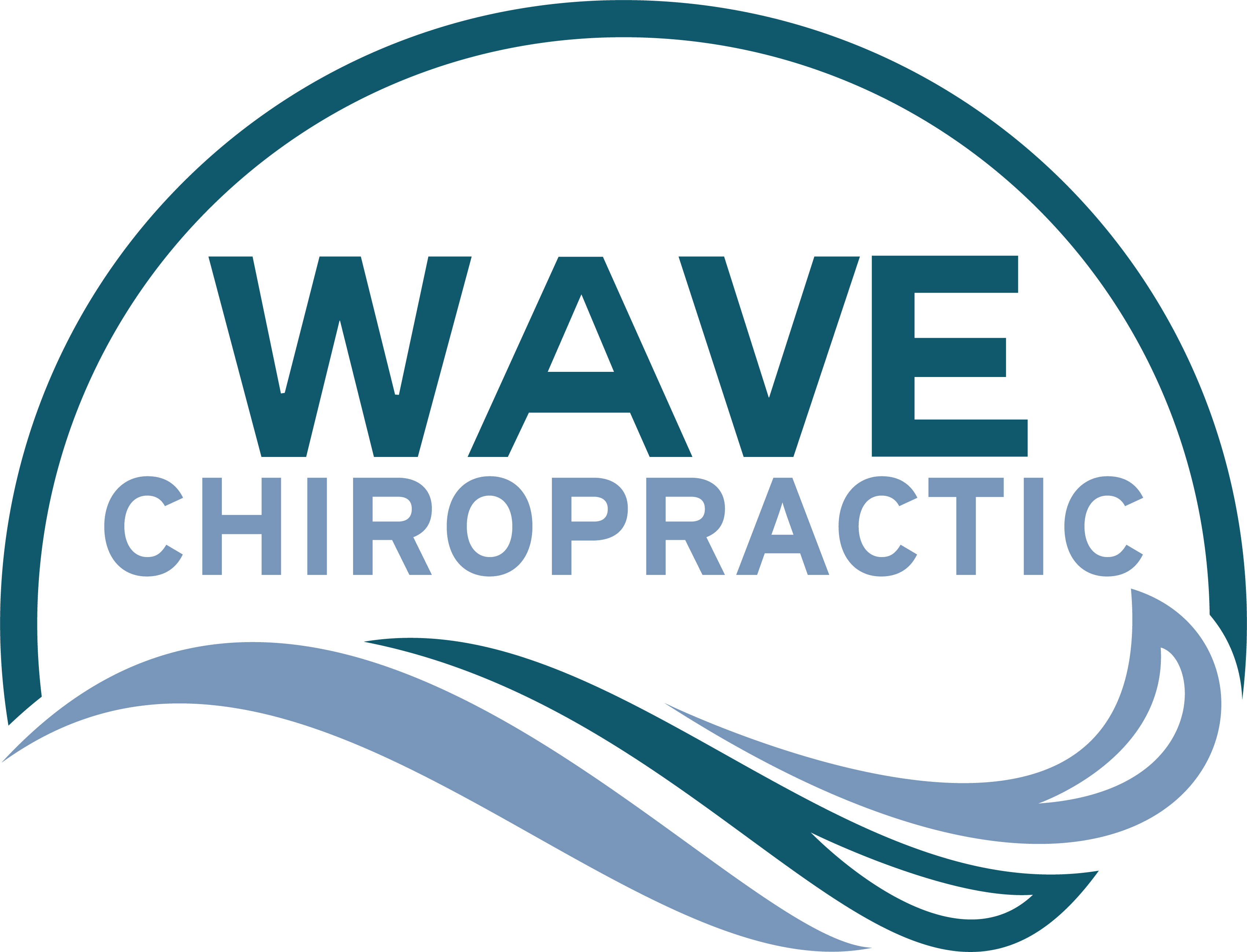If you've been grappling with chronic pain, you might be curious about how chiropractic care could offer relief. By focusing on spinal alignment and nervous system function, chiropractors employ various techniques that not only aim to reduce discomfort but also enhance your overall well-being. This approach can lead to significant improvements in your daily life, yet many remain unaware of the full potential of chiropractic methods. What's even more intriguing is the way these treatments can reveal your body's natural healing mechanisms, which raises questions about their long-term benefits.
Understanding Chronic Pain
Chronic pain is a complex condition that affects millions of people, often leading to a cycle of discomfort and frustration. You might find yourself struggling with persistent aches, sharp pains, or even sensations that seem to come and go without warning. This condition can stem from various sources, including injury, inflammation, or underlying health issues.
It's crucial to understand that chronic pain isn't just a physical sensation; it can also impact your emotional and mental well-being.
You may notice that your pain alters how you engage with daily activities. Tasks that once felt effortless can become overwhelming and exhausting. This ongoing discomfort can lead to feelings of anxiety, depression, or even isolation, as you grapple with the limitations it imposes on your life.
Recognizing the emotional aspects of chronic pain is just as important as addressing the physical symptoms.
Moreover, chronic pain can create a feedback loop where the experience of pain causes muscle tension and stress, which, in turn, exacerbates the pain. You might find that certain activities or even stressors trigger flare-ups, complicating your ability to manage the condition effectively.
Understanding your pain triggers and responses can empower you to take proactive steps toward relief.
Ultimately, being informed about chronic pain will help you navigate your journey more effectively. Whether it's through lifestyle changes, medical interventions, or support networks, you deserve to find a path that leads to a better quality of life.
Role of Chiropractic Care
When it comes to managing chronic pain, chiropractic care can play an essential role in your journey toward relief. This holistic approach focuses on the relationship between your spine, nervous system, and overall health. By addressing misalignments in your spine, you can often experience significant reductions in pain and discomfort.
You may find that chiropractic care helps improve your mobility and flexibility, making it easier to engage in daily activities. As your chiropractor assesses your posture and movement patterns, they can identify the root causes of your pain, rather than just treating the symptoms. This targeted approach can lead to more effective long-term solutions.
Additionally, chiropractic care emphasizes the importance of maintaining proper alignment and function in your body. Regular adjustments can help prevent future issues by promoting better posture and reducing stress on your muscles and joints. This proactive stance not only alleviates current pain but also minimizes the risk of recurring problems.
Moreover, chiropractic practitioners often incorporate lifestyle advice, including exercise recommendations and nutritional guidance, to support your overall well-being. By addressing the underlying factors contributing to your chronic pain, you can empower yourself to make positive changes in your life.
Common Techniques Used
Chiropractic care employs a variety of techniques to alleviate pain and improve function, ensuring you receive personalized treatment tailored to your needs.
Each technique targets specific issues related to your chronic pain, helping to restore mobility and promote overall wellness. Here are three common chiropractic techniques you might encounter during your sessions:
1. Spinal Manipulation: This hands-on technique involves applying controlled force to specific joints in your spine. It aims to realign misaligned vertebrae, reduce nerve irritability, and improve your body's ability to heal itself.
You'll often feel immediate relief after a session.
2. Soft Tissue Therapy: This technique focuses on the muscles, tendons, and ligaments surrounding your spine. Your chiropractor may use massage, stretching, or myofascial release to relieve tension and improve circulation.
You'll likely notice enhanced flexibility and reduced pain as a result.
3. Rehabilitative Exercises: Your chiropractor may prescribe specific exercises tailored to your condition. These exercises strengthen your muscles, improve stability, and enhance your range of motion.
Benefits of Chiropractic Treatment
Many people find that chiropractic treatment offers a host of benefits beyond just pain relief. When you visit a chiropractor, you're not only addressing immediate discomfort; you're also enhancing your overall health and well-being.
One significant benefit is improved mobility. Regular adjustments can restore proper alignment, making it easier for you to move freely without restrictions.
You may also experience increased energy levels. Misalignments in your spine can interfere with your body's nervous system, leading to fatigue. By correcting these issues, chiropractic care helps optimize your body's functions, allowing you to feel more energized throughout your day.
Additionally, chiropractic treatment often reduces the need for medications. Instead of relying on painkillers that only mask symptoms, you're taking a proactive approach to your health. This can lead to fewer side effects and a better quality of life.
Stress relief is another important benefit. The physical adjustments can release tension in your muscles and spine, which helps you feel more relaxed and balanced. You might even notice improvements in your mood as your body becomes less burdened by pain and discomfort.
Finally, chiropractic care promotes better posture. By focusing on spinal alignment, you're more likely to maintain a healthy posture, which can prevent future injuries and enhance your overall physical appearance.
In short, chiropractic treatment can be a game-changer for your health, offering benefits that extend far beyond simple pain relief.
Evidence and Research
When considering chiropractic care for chronic pain, it's essential to look at the evidence supporting its effectiveness.
Numerous clinical studies highlight how chiropractic adjustments can lead to significant pain relief by addressing underlying mechanisms.
Understanding this research can help you make informed choices about your treatment options.
Clinical Studies Overview
Numerous clinical studies have explored the effectiveness of chiropractic care in managing chronic pain, revealing promising results. Research indicates that chiropractic adjustments can greatly reduce pain and improve function in patients suffering from various conditions.
You might find the following points particularly illuminating:
- Low Back Pain: A systematic review showed that chiropractic manipulation can lead to better short-term outcomes compared to conventional medical care, making it a viable option for those struggling with persistent low back pain.
- Migraine and Tension Headaches: A study found that patients receiving chiropractic care experienced fewer headache days and a reduction in intensity, demonstrating its potential as a non-pharmacological treatment for those who suffer from chronic headaches.
- Neck Pain: Clinical trials suggest that chiropractic adjustments can effectively alleviate neck pain, with many patients reporting long-lasting relief and increased mobility after treatment.
These studies underscore the benefits of incorporating chiropractic care into pain management strategies.
If you're dealing with chronic pain, it might be worth considering chiropractic as a complementary approach to your overall health plan.
Mechanisms of Pain Relief
Understanding how chiropractic care alleviates pain involves examining several key mechanisms at play. One major mechanism is spinal manipulation, which helps restore proper alignment to the spine. When your spine is aligned, it can reduce nerve irritation, leading to decreased pain and improved function.
Chiropractic adjustments can also enhance blood flow, which aids in the healing process. Improved circulation means that your body can deliver essential nutrients and oxygen to injured tissues more efficiently. This boosts recovery and minimizes inflammation, a common source of chronic pain.
Moreover, chiropractic care may stimulate the release of endorphins, your body's natural painkillers. When you receive adjustments, you might experience a surge in these feel-good hormones, helping to elevate your mood and reduce your perception of pain.
Research shows that chiropractic care can also enhance your range of motion and flexibility, which can help you engage in physical activities without discomfort.
Finding a Chiropractor
When you're looking for a chiropractor, checking their qualifications and credentials is essential.
You'll want to evaluate their treatment approaches to guarantee they align with your needs.
Finding the right fit can make a significant difference in your care and recovery.
Qualifications and Credentials
Finding a qualified chiropractor is essential for effective pain management and overall health. When you're looking for someone to help with your chronic pain, it's important to verify they've the right qualifications and credentials.
Here are three key factors to evaluate:
- Education and Training: Make certain your chiropractor has completed a Doctor of Chiropractic (DC) degree from an accredited institution. This typically involves four years of undergraduate education followed by four years of chiropractic training.
- Licensure: Verify that the chiropractor is licensed in your state. Each state has its own requirements for licensure, which usually involves passing national board exams and meeting continuing education requirements.
- Specializations: Some chiropractors have additional certifications in specific areas, such as sports injuries, pediatrics, or rehabilitation. If you have particular needs, look for a chiropractor who specializes in those areas to guarantee you receive tailored care.
Evaluating Treatment Approaches
After confirming a chiropractor's qualifications and credentials, the next step is to evaluate their treatment approaches. Different chiropractors use various techniques, so it's important to find one that aligns with your needs.
Start by asking about their methods—do they focus on manual adjustments, soft tissue therapies, or holistic approaches? You'll want to know if they incorporate other treatments like acupuncture or physical therapy.
Consider the chiropractor's philosophy towards pain management. Some may emphasize long-term care, while others might focus solely on symptom relief. Don't hesitate to inquire about their experience with chronic pain conditions similar to yours.
It's also helpful to read reviews or testimonials from other patients to gauge their satisfaction with the treatment outcomes.
Lastly, during your initial consultation, pay attention to how well the chiropractor listens to your concerns. A good practitioner will take the time to understand your specific situation and tailor their approach accordingly.
Trust your instincts—if you feel comfortable and confident in their treatment plan, you're more likely to have a positive experience.
Conclusion
Chiropractic care offers a powerful approach to managing chronic pain by addressing spinal misalignments and promoting overall well-being. By utilizing techniques like spinal manipulation and soft tissue therapy, you can experience significant relief and improved mobility. The benefits extend beyond just pain reduction; many find enhanced relaxation and a better quality of life. If you're struggling with chronic pain, consider exploring chiropractic treatment as a viable option to reclaim your comfort and liveliness.

